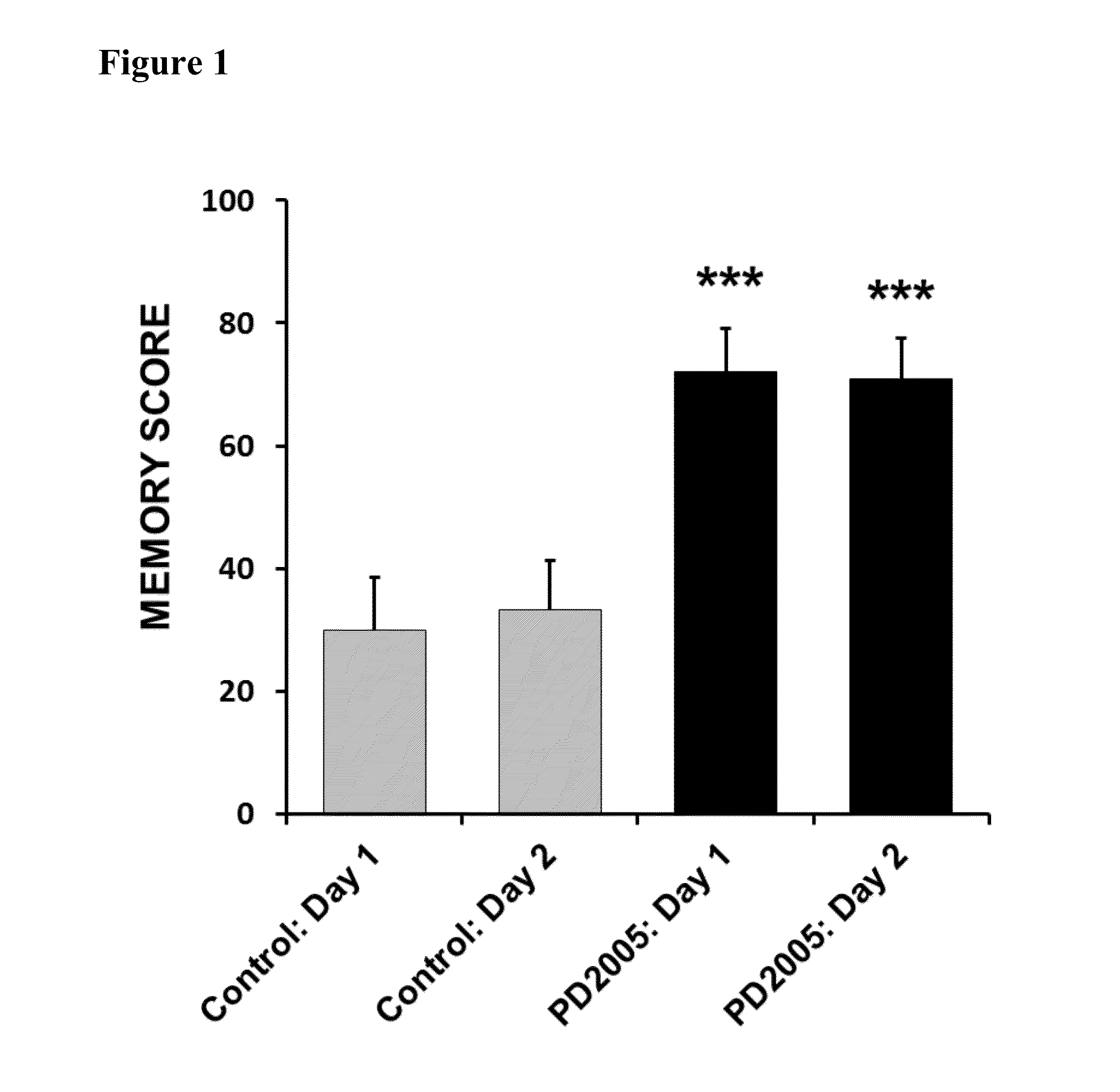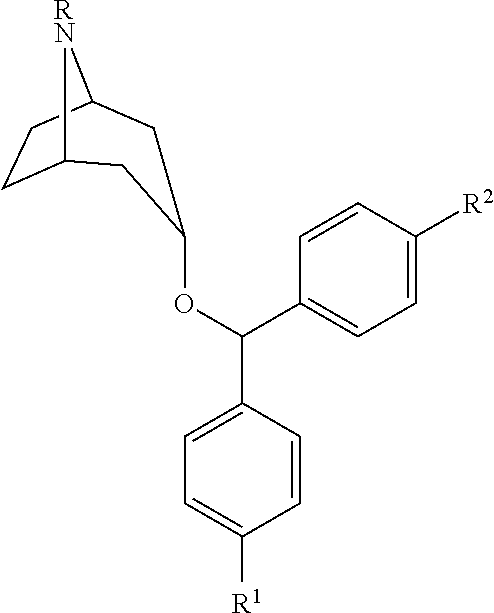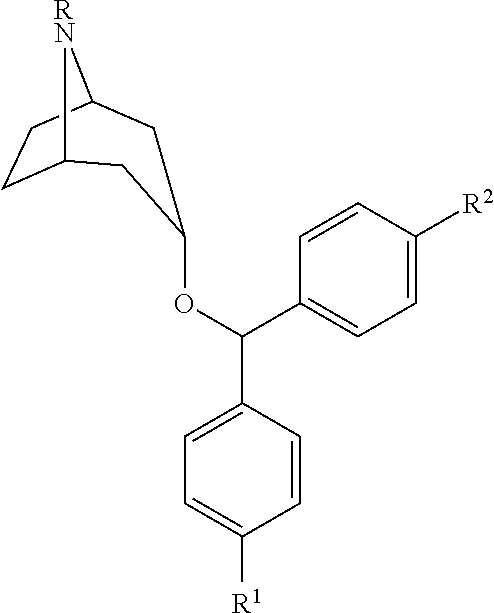Substituted benztropine analogs for treatment of dementia
a technology of substituted benztropine and dementia, which is applied in the direction of heterocyclic compound active ingredients, biocide, drug compositions, etc., can solve the problems of severe limitations in clinical usefulness of benztropine and the number of undesirable side effects
- Summary
- Abstract
- Description
- Claims
- Application Information
AI Technical Summary
Benefits of technology
Problems solved by technology
Method used
Image
Examples
example
[0058]PD2005 has been shown to be highly effective in treating Alzheimer's disease in a well-respected preclinical model. In this model, genes that cause Alzheimer's disease have been cloned from living Alzheimer's patients and then directly cloned into the genome of living mice to create Alzheimer mice (3×Tg-AD mice). These 3×Tg-AD mice demonstrate: 1) the age-dependent memory deficits seen in Alzheimer's patients, 2) the age-dependent development of brain pathology seen in Alzheimer's patients, and 3) the age-dependent dementia characteristic of Alzheimer's patients. (Oddo, S., et al., Triple-transgenic model of Alzheimer's disease with plaques and tangles: intracellular Abeta and synaptic dysfunction. Neuron, 2003; 39(3):409-21.)
[0059]PD2005 administration significantly improved memory, the central cognitive deficit seen in Alzheimer's patients, in these Alzheimer 3×Tg-AD mice (FIG. 1). Short-term memory was assessed in a well-accepted memory model (single alternation T-maze). In...
PUM
| Property | Measurement | Unit |
|---|---|---|
| Mass flow rate | aaaaa | aaaaa |
| Mass flow rate | aaaaa | aaaaa |
| Mass flow rate | aaaaa | aaaaa |
Abstract
Description
Claims
Application Information
 Login to View More
Login to View More - R&D
- Intellectual Property
- Life Sciences
- Materials
- Tech Scout
- Unparalleled Data Quality
- Higher Quality Content
- 60% Fewer Hallucinations
Browse by: Latest US Patents, China's latest patents, Technical Efficacy Thesaurus, Application Domain, Technology Topic, Popular Technical Reports.
© 2025 PatSnap. All rights reserved.Legal|Privacy policy|Modern Slavery Act Transparency Statement|Sitemap|About US| Contact US: help@patsnap.com



